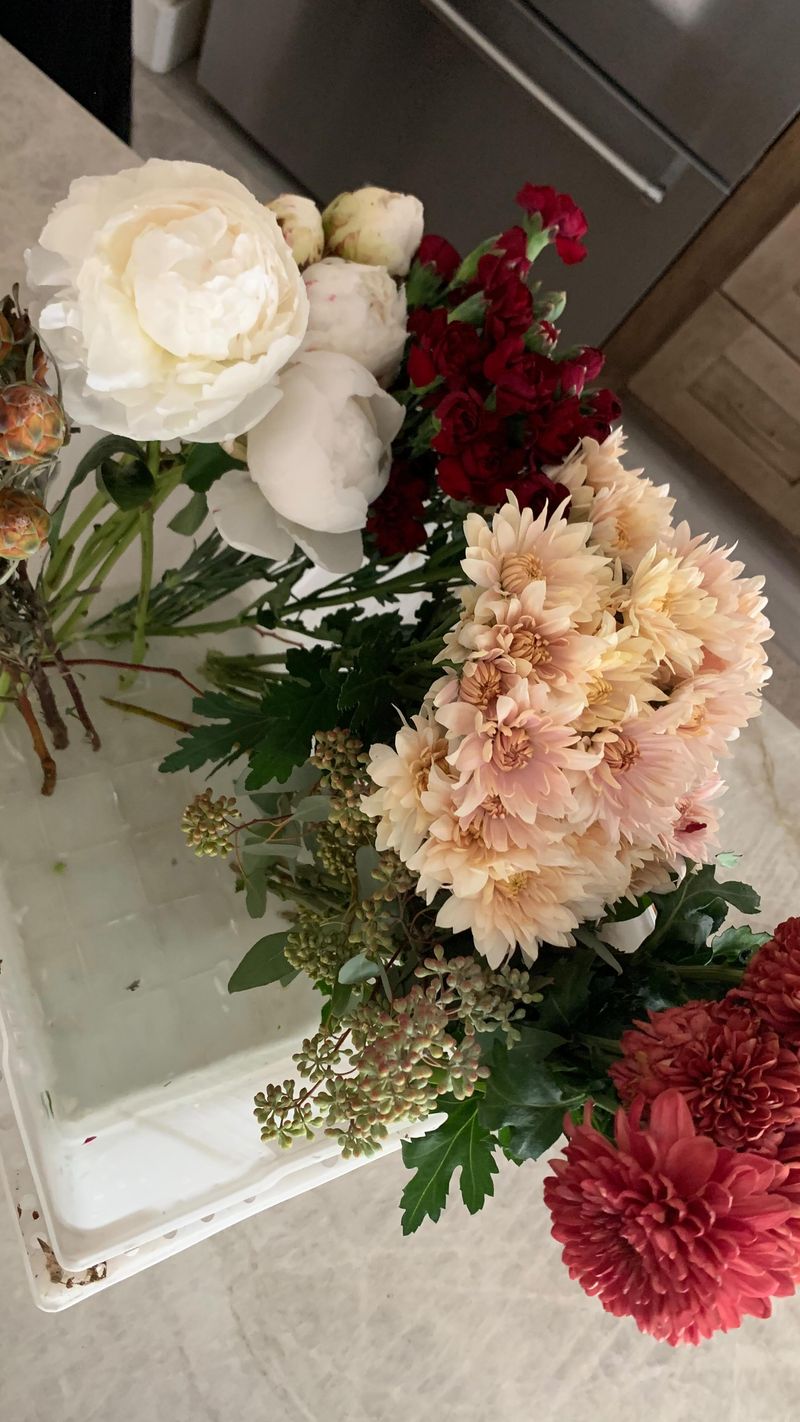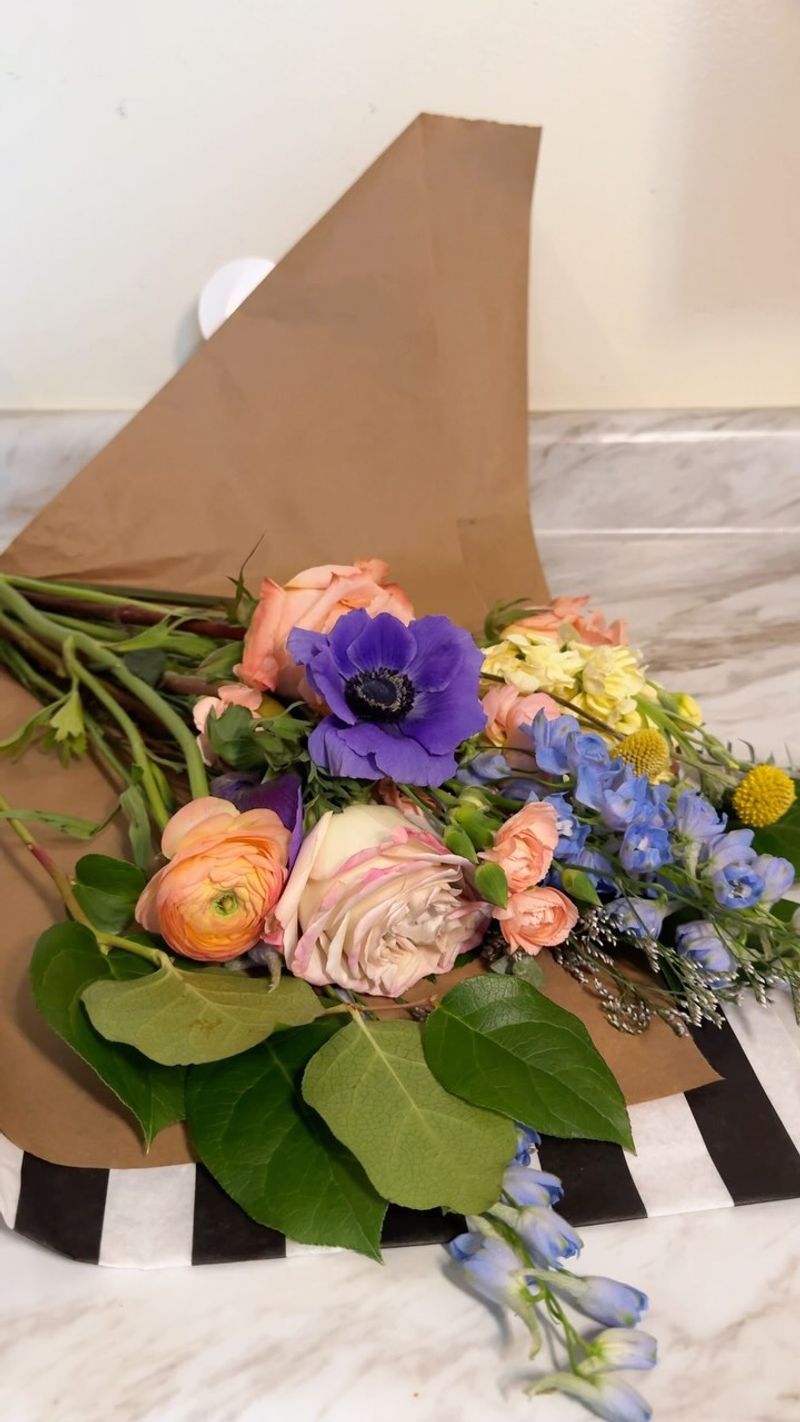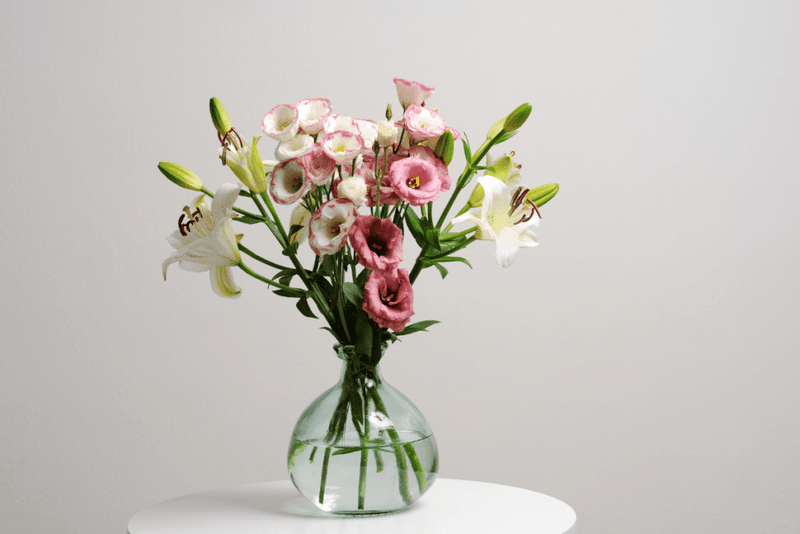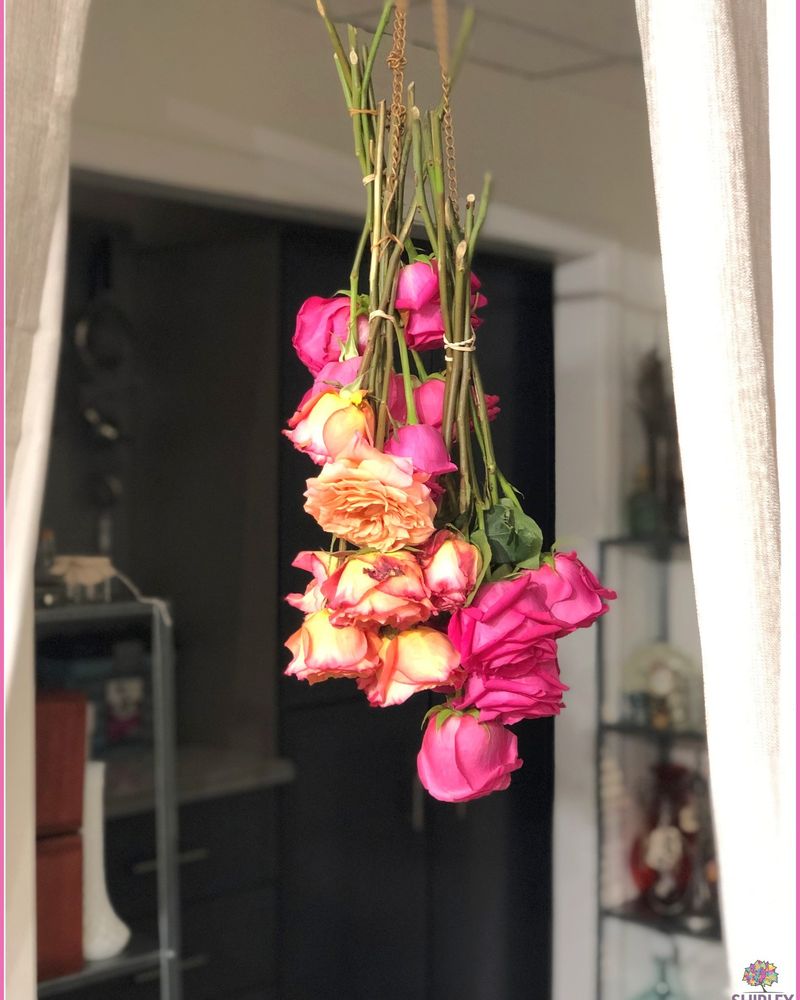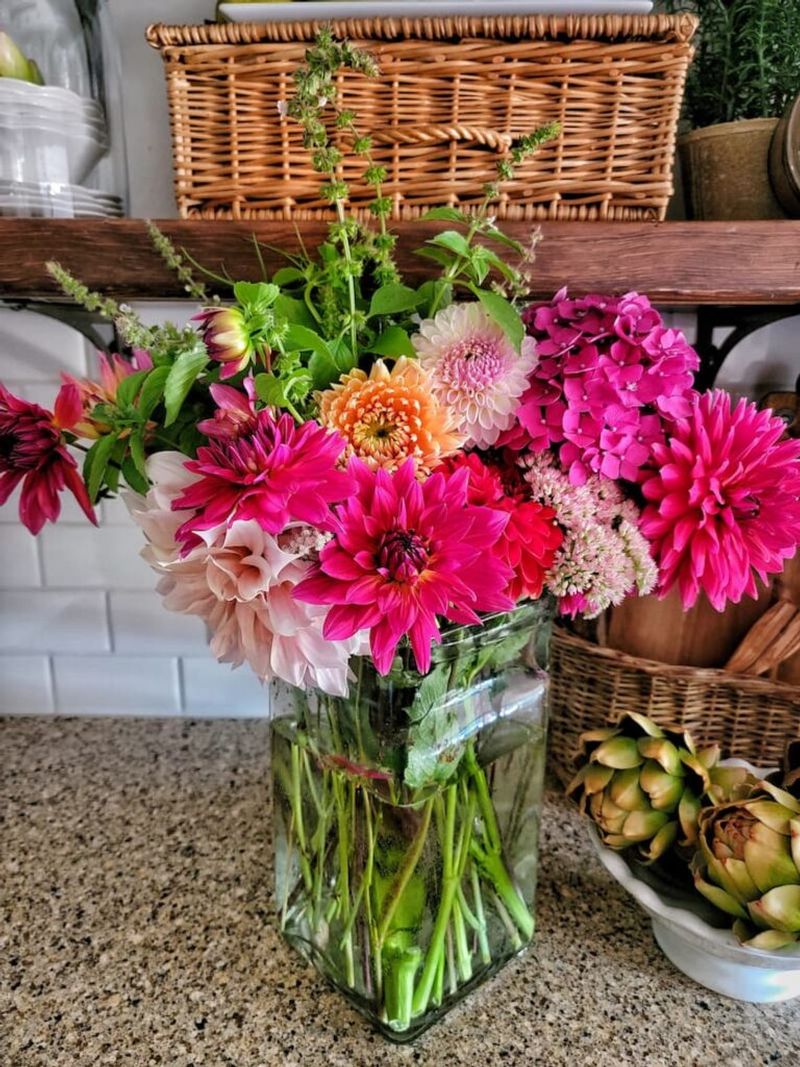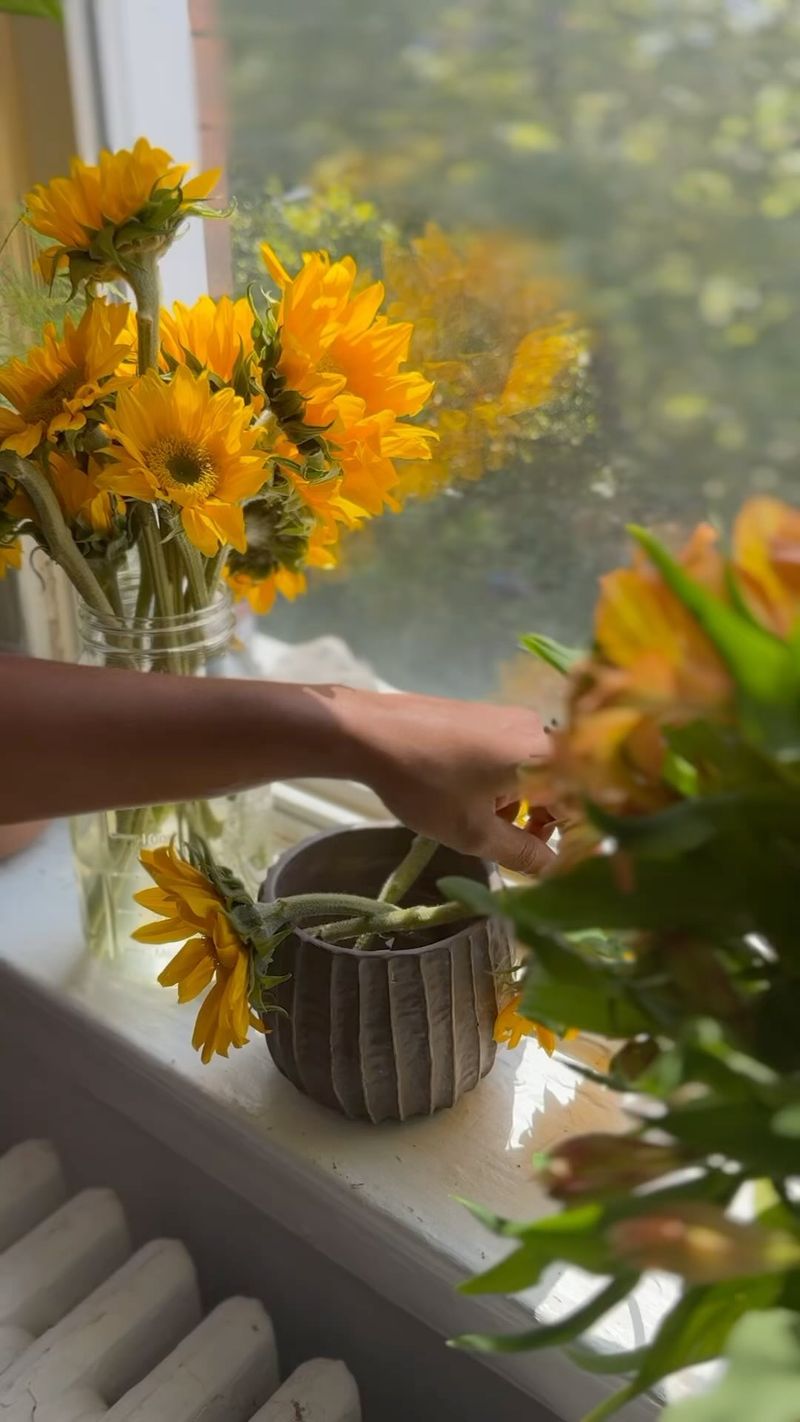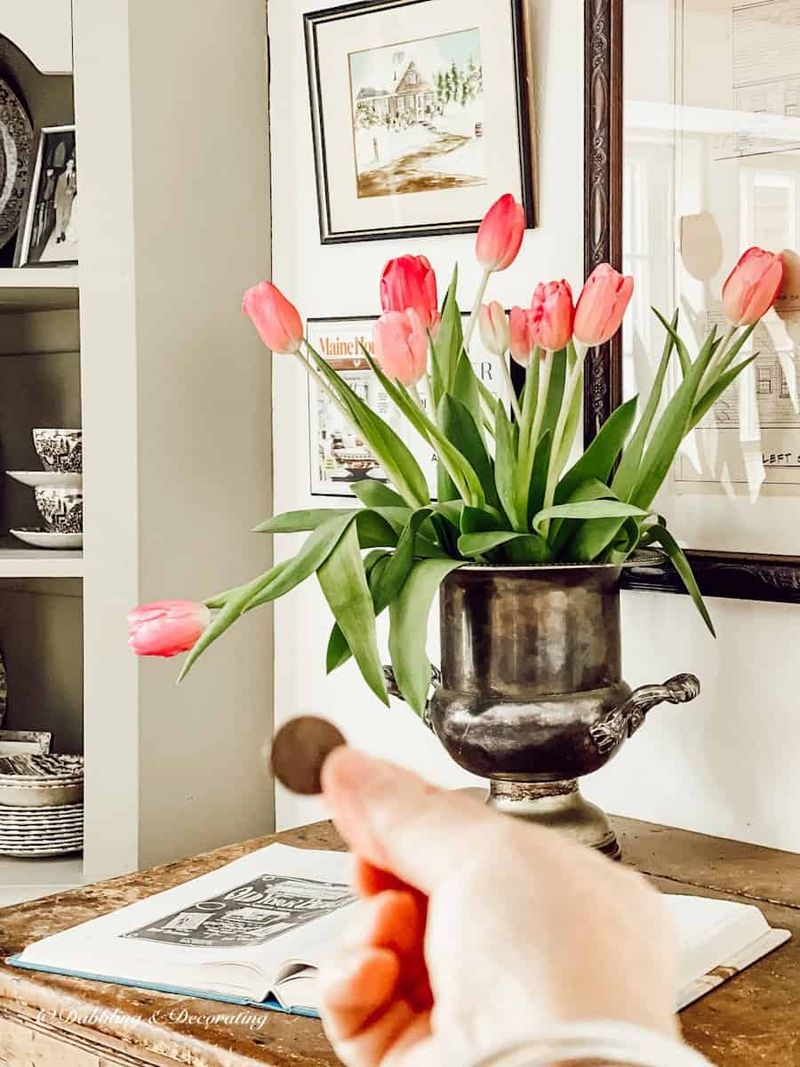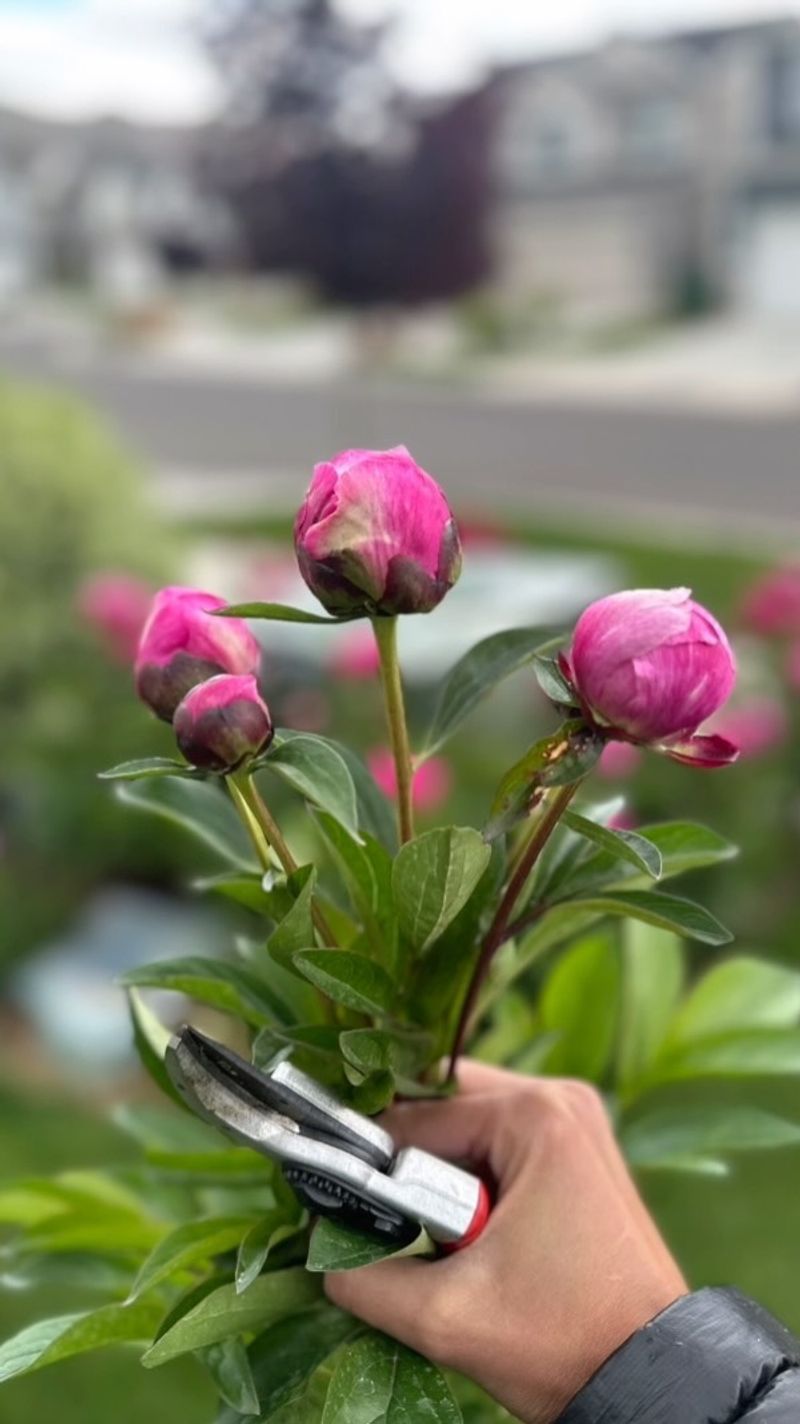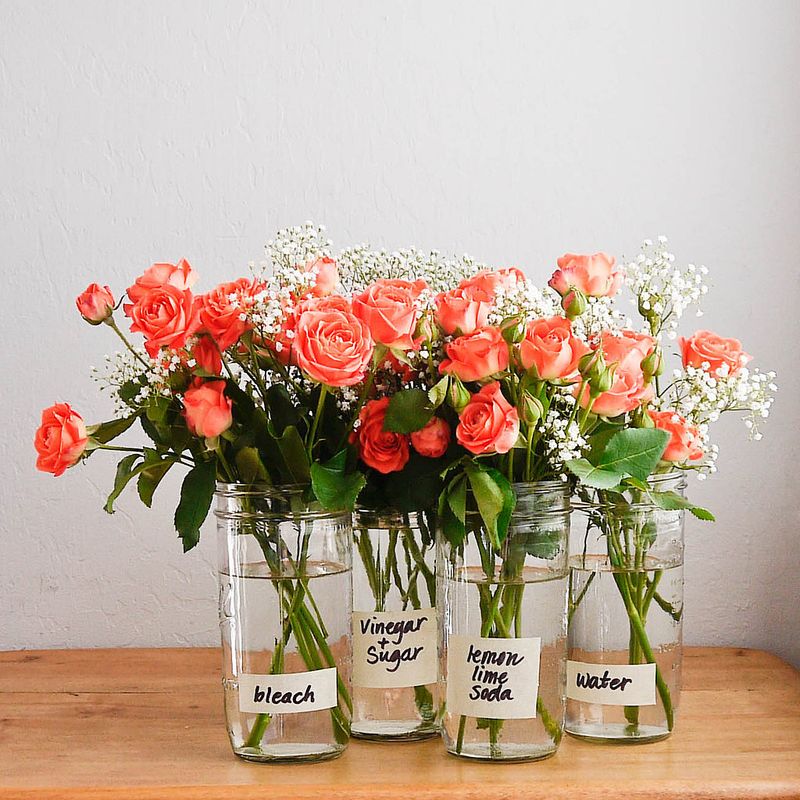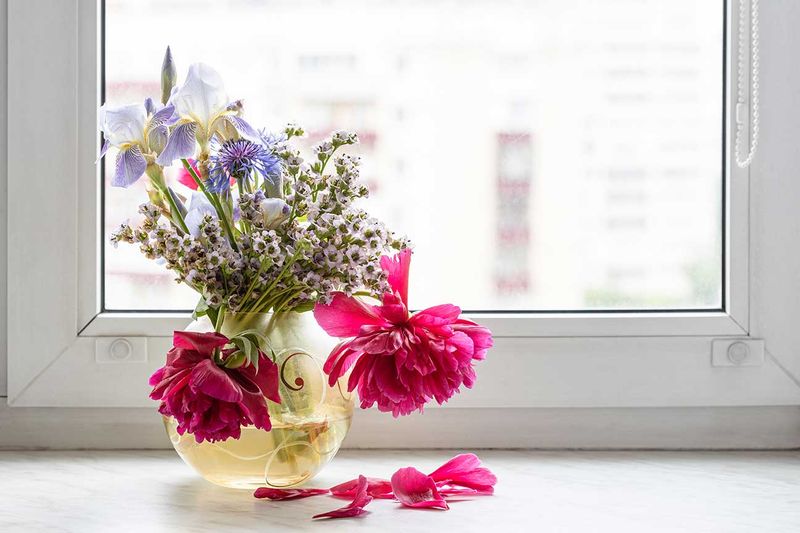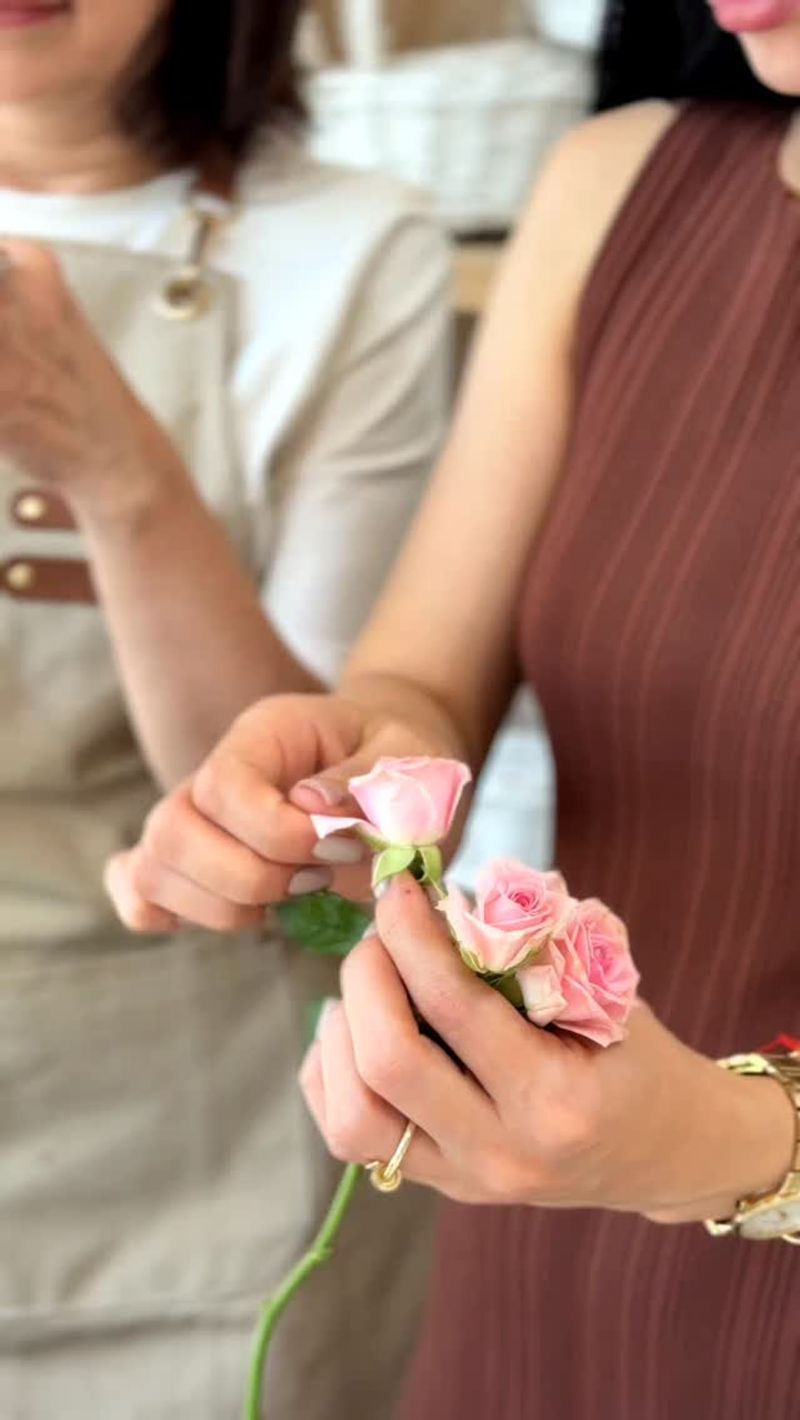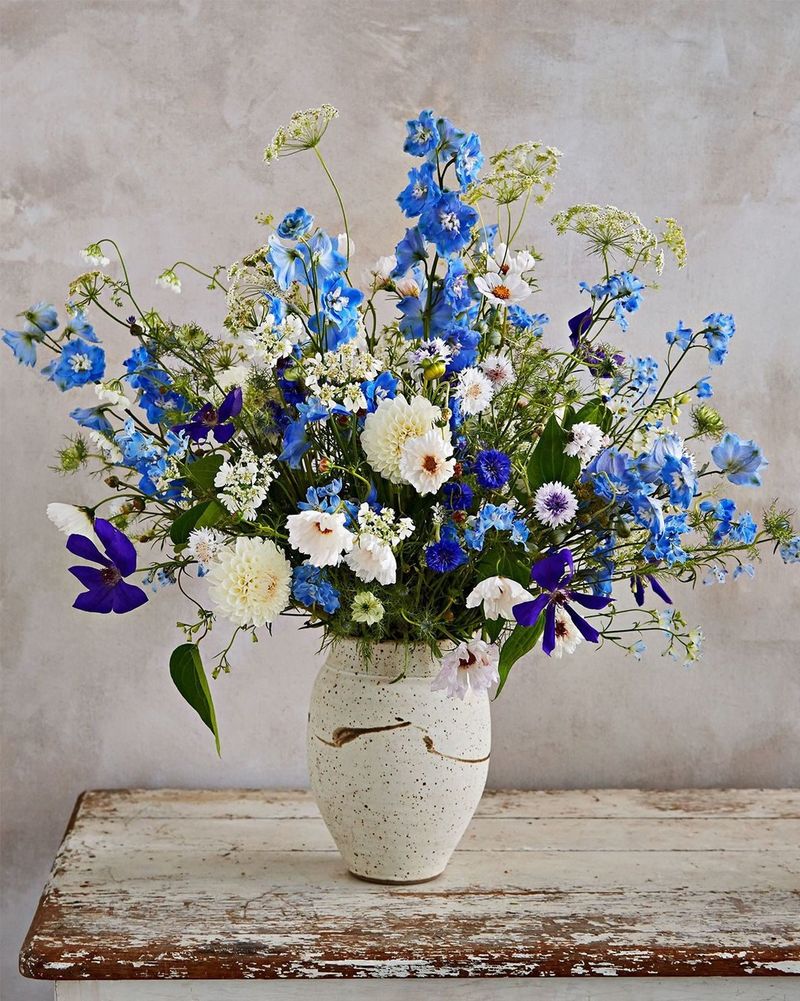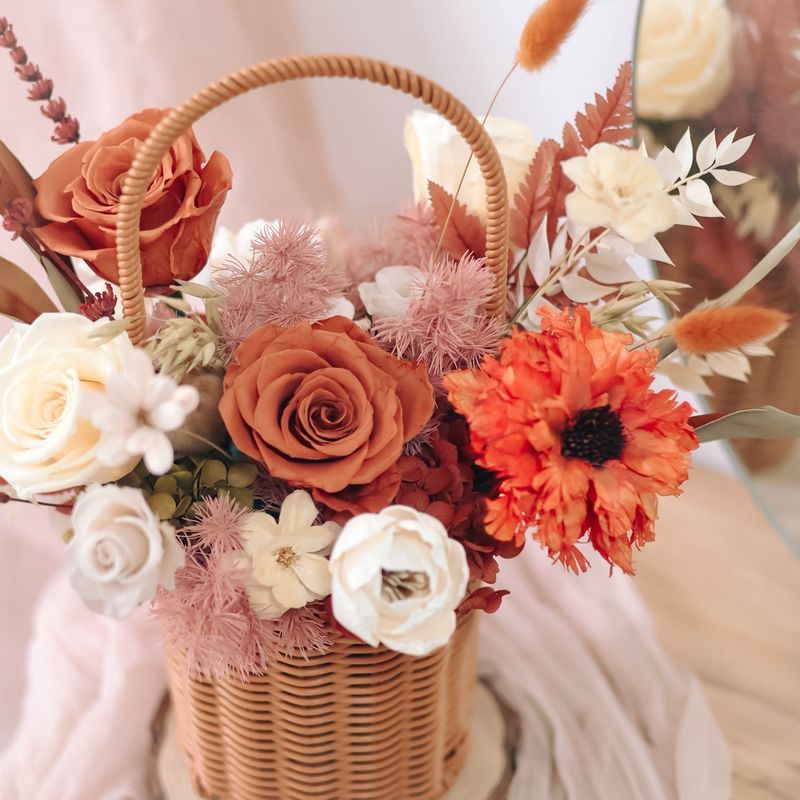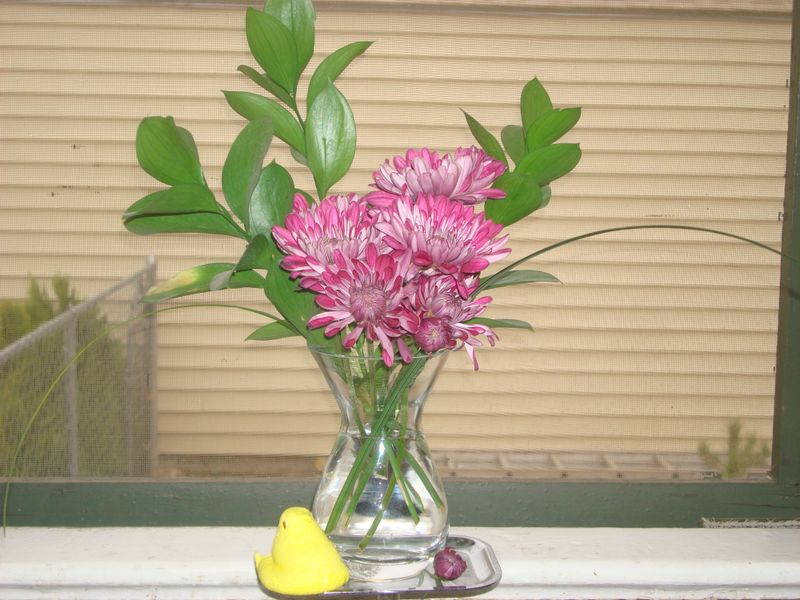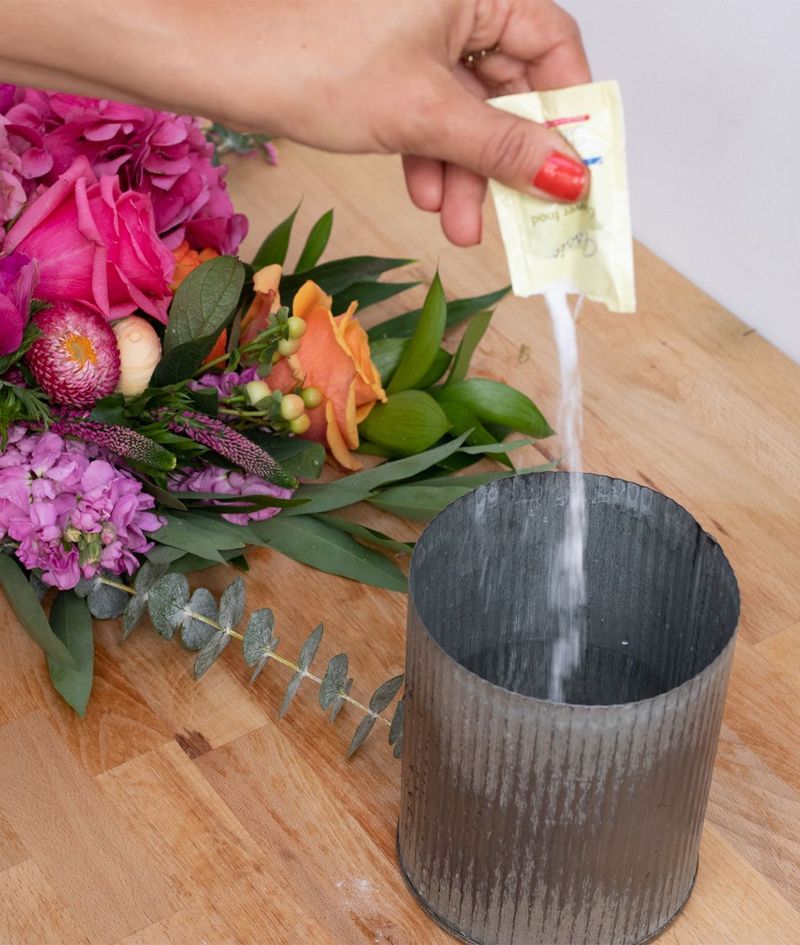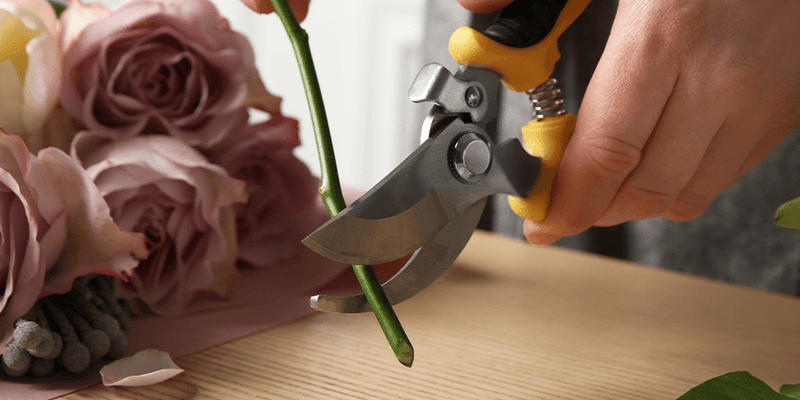Nothing’s more disappointing than watching fresh flowers fade too fast. Whether it’s a garden harvest or a store-bought bouquet, your blooms deserve to shine longer.
With a few clever tricks, you can stretch their beauty and keep petals perky for days. These 18 easy tips will help your flowers stay fresh, full, and photo-ready.
1. Cut Stems at an Angle
Snipping flower stems at a 45-degree angle creates more surface area for water absorption. This simple technique prevents stems from sitting flat against the bottom of the vase, which can block water intake.
Use sharp scissors or pruning shears for a clean cut that doesn’t crush the stem’s water channels. For best results, cut stems under running water to prevent air bubbles from forming in the stem.
2. Remove Lower Leaves
Leaves that sit below the waterline quickly rot and create bacteria that harm your flowers. By stripping away these lower leaves, you’re eliminating a major source of contamination.
Gently pull off any foliage that would be submerged in water. Pay special attention to roses and lilies, which often have dense foliage. The cleaner your stems, the clearer your water will stay.
3. Add Sugar to the Water
Flowers love a sweet treat! Adding a tablespoon of sugar to your vase water provides nutrition that helps buds open and extends bloom time. Think of it as flower food – plants convert sugar into energy just like we do.
Regular granulated sugar works perfectly fine. For even better results, mix the sugar with a few drops of bleach to prevent bacterial growth while feeding your flowers.
4. Use Vodka as a Preservative
A splash of vodka works wonders for your blooms! Adding a few drops to your vase water slows the production of ethylene, a gas that makes flowers age faster. The alcohol also helps kill bacteria that can clog stems.
Just a teaspoon in a quart of water is enough – no need to waste the good stuff! This trick works especially well with lilies, tulips, and daisies, giving them several extra days of freshness.
5. Spritz with Hairspray
Hairspray isn’t just for your hair! A light mist of hairspray on the underside of flower petals creates a protective coating that slows moisture loss. This works particularly well for delicate flowers like roses and peonies.
Hold the can about 12 inches away and spray gently. Make sure you’re using regular hairspray, not the extra-hold variety, which can be too heavy for delicate blooms.
6. Keep Away From Fruit
Ripening fruits are flower killers! They release ethylene gas that causes flowers to age rapidly. Even a bowl of apples across the room can shorten your bouquet’s lifespan by days.
Find a spot for your flowers away from fruit bowls and ripening bananas. The kitchen counter might seem convenient, but it’s often the worst place due to fruit and fluctuating temperatures. A cool dining table or entryway table is much better.
7. Change Water Daily
Fresh water is the simplest yet most effective trick for longer-lasting flowers. Bacteria multiply quickly in standing water, clogging stems and shortening bloom time dramatically. Daily water changes can double your flowers’ lifespan!
Empty the vase completely, rinse it with warm water, and refill with room-temperature water. While you’re at it, give the stems a fresh cut to improve water uptake. Your flowers will reward you with extra days of beauty.
8. Add a Copper Penny
Dropping a penny minted before 1982 into your vase creates natural antibacterial protection. These older pennies contain actual copper, which fights bacteria in the water that can clog stems and cause premature wilting.
Make sure to clean the penny with soap and water before adding it to your arrangement. While newer pennies (mostly zinc with copper plating) won’t harm your flowers, they don’t offer the same antibacterial benefits as the older, copper-rich coins.
9. Refrigerate Overnight
Flowers love the cold! Professional florists store their inventory in refrigerators for good reason. Placing your arrangement in the refrigerator overnight dramatically slows aging and keeps blooms fresh longer.
Just make sure there’s no fruit in your fridge, as the ethylene gas will harm your flowers. Remove the arrangement in the morning and let it return to room temperature before adding fresh water. This works especially well for roses, tulips, and lilies.
10. Use Lemon-Lime Soda
Your flowers might enjoy soda more than you think! A quarter cup of clear lemon-lime soda mixed with water provides both sugar (food) and acidity that flowers love. The citric acid helps the water move up the stems more efficiently.
Make sure to use regular soda, not diet, as the artificial sweeteners don’t provide the same benefits. The carbonation doesn’t matter much – it’s the sugar and acid that work the magic. Replace this mixture every other day for best results.
11. Crush Aspirin in Water
Aspirin isn’t just for headaches – it’s great for flowers too! Crushing one standard aspirin tablet and dissolving it in your vase water lowers the pH, creating slightly acidic conditions that flowers prefer for water uptake.
The salicylic acid in aspirin also fights bacteria growth in the water. For a large bouquet, use two tablets. This trick works particularly well with roses and chrysanthemums, often extending their vase life by 3-5 days.
12. Trim Away Wilting Blooms
Dead flowers spread decay to healthy ones! When one flower in your arrangement starts to wilt, it releases ethylene gas that speeds up the aging process for neighboring blooms. Regular deadheading keeps your arrangement looking fresh longer.
Use clean scissors to snip away any browning petals or wilting blooms. This not only improves appearance but also redirects the plant’s energy to maintaining the remaining healthy flowers. Check your arrangement daily for signs of decline.
13. Apply Clear Nail Polish
A dab of clear nail polish on the seam where petals meet the stem creates a moisture seal that works wonders! This unusual trick helps flowers retain internal moisture, preventing wilting and extending bloom time.
Apply just a tiny amount using a toothpick or the brush applicator. This works especially well for individual stems like roses or gerbera daisies. The nail polish creates an invisible barrier that slows water loss without affecting the flower’s appearance.
14. Choose the Right Vase
Vase selection makes a huge difference in flower longevity! Tall stems need tall vases for proper support, while short bouquets need shallow containers. The right-sized vase prevents stem bending and damage.
Clean your vase thoroughly with hot, soapy water before use to eliminate bacteria. Glass or ceramic vases are best since they don’t harbor bacteria like wooden or porous containers. For arrangements with lots of stems, narrower necked vases provide better support.
15. Avoid Direct Sunlight
Sunlight speeds up the aging process for cut flowers dramatically! While growing plants need sunlight, cut flowers will last much longer in a cool, shaded spot away from direct sun and heat sources.
The ideal location is bright enough to see the colors but without direct rays hitting the blooms. Keep arrangements away from heating vents, appliances that generate heat, and sunny windowsills. A north-facing room often provides perfect lighting conditions.
16. Add a Splash of Bleach
A few drops of bleach in your vase water creates a hostile environment for bacteria while being gentle enough for your flowers. Just 1/4 teaspoon in a quart of water is all you need for this powerful preservation hack.
The bleach keeps the water clear and prevents the slimy buildup that clogs stems. Don’t worry about harming your flowers – this tiny amount is safe for them. For best results, combine with the sugar trick for both food and protection.
17. Use Flower Food Packets
Those little packets that come with flower deliveries contain a perfectly balanced mixture of nutrients, acidifiers, and bacteria inhibitors. Don’t throw them away – they’re scientifically formulated to maximize vase life!
Follow the directions exactly, as using too much can harm your flowers. If you run out, you can make your own by mixing 1 teaspoon sugar, 1 teaspoon bleach, and 2 teaspoons lemon juice in a quart of water.
18. Recut Stems Every Other Day
Flower stems naturally seal their cut ends over time, reducing water uptake. Recutting the stems every other day removes this seal and creates fresh channels for water absorption, significantly extending vase life.
Make your cuts underwater when possible to prevent air bubbles from forming in the stems. Even removing just 1/4 inch makes a difference! This practice is especially important for woody stems like roses, lilacs, and branches.


